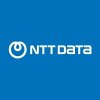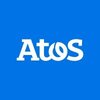
Accenture
Proud winner of ABECA 2024 - AmbitionBox Employee Choice Awards
Filter interviews by
Accenture SAP PP Consultant Interview Questions and Answers
Accenture SAP PP Consultant Interview Experiences
2 interviews found

(2 Questions)
- Q1. Implementation Projects handled
- Ans.
Handled multiple implementation projects in SAP PP
Managed end-to-end implementation of SAP PP module for a manufacturing company
Successfully implemented SAP PP for a pharmaceutical company, streamlining their production process
Handled customization and configuration of SAP PP module for a food processing company
Provided training and support to end-users during and after implementation
- Q2. Master Data & Applications
Interview Preparation Tips
Connected Online
I applied via Naukri.com and was interviewed in Dec 2020. There were 3 interview rounds.
Interview Questionnaire
3 Questions
- Q1. All basic config relate to pp
- Q2. Material master views in pp
- Ans.
Material master views in PP are used to store and manage data related to production planning.
The Basic Data view contains information such as material type, unit of measure, and weight.
The Work Scheduling view contains data related to production scheduling, such as lead time and lot size.
The MRP view contains data related to material requirements planning, such as safety stock and reorder point.
The Production Resources...
- Q3. Strategy group scenario
Interview Preparation Tips
Interview questions from similar companies

Interview Questionnaire
1 Question
- Q1. Questions related to COBOL,JCL,VSAM,DB2,CICS,Vision plus

Interview Questionnaire
7 Questions
- Q1. Solid principles
- Q2. Extension methods
- Q3. Static class and static constructor
- Ans.
Static class and static constructor in C#
Static class can only contain static members and cannot be instantiated
Static constructor is called only once when the class is first accessed
Static constructor is used to initialize static members of the class
Example: Math class in C# is a static class
Example: static constructor can be used to initialize a static variable with a value
- Q4. Polymorphism
- Q5. Dependency injection
- Q6. Angular life cycle hook
- Q7. Performance improvement in Angular app
- Ans.
Performance improvement in Angular app
Use lazy loading to load modules on demand
Optimize change detection strategy
Use trackBy function in ngFor loops
Minimize DOM manipulation
Use AOT compilation
Implement server-side rendering
Use web workers for heavy computations
Use caching for frequently accessed data
Skills evaluated in this interview

Interview Questionnaire
1 Question
- Q1. From start to end how you perform web application penetration testing on a website with firewall is enabled on it?
- Ans.
Performing web application penetration testing on a website with firewall enabled.
Identify the type of firewall and its configuration
Perform reconnaissance to gather information about the target
Identify vulnerabilities and exploit them
Use tools like Burp Suite, Nmap, and Metasploit
Test for common web application vulnerabilities like SQL injection and cross-site scripting
Document findings and provide recommendations for
Skills evaluated in this interview

I applied via Walk-in and was interviewed before Dec 2021. There were 3 interview rounds.

The planning if the project and how to take over the project
We should maintain the aptitude to with our project and with with
Interview Preparation Tips

I applied via Naukri.com and was interviewed in Jan 2021. There were 4 interview rounds.
Interview Questionnaire
1 Question
- Q1. Mostly the technical question from my skill background. As the interview was in video conference mode so mostly conceptual and very few coding and query related problem solving question has been asked.
Interview Preparation Tips
2. Don't falsify your skill set.
3. Make sure you have good concept and problem solving ability on your skill
set.
4. Be confident and clear about your answer. It is always a good practice if you
are trying to explain something give an example with it.
5. Best of Luck !!!!

I applied via Naukri.com and was interviewed in Jan 2021. There was 1 interview round.
Interview Questionnaire
1 Question
- Q1. Azure migration steps from onprem to cloud, Hyper V migration, VMWARE tool we used for migration
- Ans.
Steps for Azure migration from onprem to cloud and Hyper V migration using VMWARE tool.
Assess on-premises environment
Choose appropriate migration method
Prepare Azure environment
Migrate data and applications
Optimize and secure migrated resources
VMware tool used for migration: VMware vCenter Converter
Hyper-V migration can be done using Azure Site Recovery
Interview Preparation Tips
Skills evaluated in this interview

I applied via Naukri.com and was interviewed in Mar 2021. There were 4 interview rounds.
Interview Questionnaire
1 Question
- Q1. Memory management in applications
- Ans.
Memory management is crucial for efficient application performance.
Memory allocation and deallocation should be done carefully to avoid memory leaks.
Unused memory should be released to prevent memory fragmentation.
Memory profiling tools can help identify memory-related issues.
Caching can improve performance by reducing the need for frequent memory allocation.
Examples: Java's garbage collector, C++'s smart pointers, iOS
Interview Preparation Tips
Try to answer an much you can.
Normally questions are related to respective technology.
So if you have good knowledge on your technology then you can crack it.
After you clear 1st round then there will be AMCAT round. After completion you there will be a hr round.

I applied via Naukri.com and was interviewed in Jul 2021. There were 3 interview rounds.
Interview Questionnaire
1 Question
- Q1. Resume questions only
Interview Preparation Tips
Accenture Interview FAQs
Tell us how to improve this page.
Accenture Interviews By Designations
- Accenture Associate Software Engineer Interview Questions
- Accenture Application Developer Interview Questions
- Accenture Application Development Analyst Interview Questions
- Accenture Software Developer Interview Questions
- Accenture Software Engineer Interview Questions
- Accenture Analyst Interview Questions
- Accenture Application Development Associate Interview Questions
- Accenture Senior Analyst Interview Questions
- Show more
Interview Questions for Popular Designations
- SAP Abap Consultant Interview Questions
- SAP Fico Consultant Interview Questions
- SAP MM Consultant Interview Questions
- SAP Consultant Interview Questions
- SAP SD Consultant Interview Questions
- SAP Basis Consultant Interview Questions
- SAP MM Functional Consultant Interview Questions
- Functional Consultant Interview Questions
- Show more
SAP PP Consultant Interview Questions from Similar Companies
Fast track your campus placements
Accenture SAP PP Consultant Reviews and Ratings
based on 5 reviews
Rating in categories
|
Application Development Analyst
39k
salaries
| ₹3 L/yr - ₹12 L/yr |
|
Application Development - Senior Analyst
27.4k
salaries
| ₹7 L/yr - ₹20.2 L/yr |
|
Team Lead
24.8k
salaries
| ₹7.2 L/yr - ₹26 L/yr |
|
Senior Software Engineer
18.2k
salaries
| ₹6 L/yr - ₹20 L/yr |
|
Senior Analyst
17.8k
salaries
| ₹5.5 L/yr - ₹21 L/yr |

TCS

Cognizant

Capgemini

Infosys
- Home >
- Interviews >
- Accenture Interview Questions >
- Accenture SAP PP Consultant Interview Questions
















